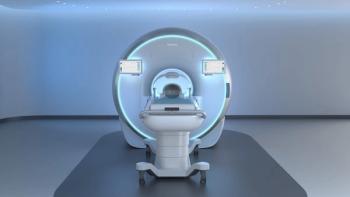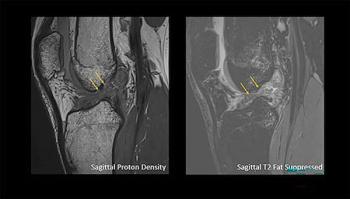
Moore’s Law in Medical Imaging
An argument that Moore’s law is at work in medical imaging.
A broad characterization of Moore's Law is: "the driving force of technological and social change, productivity and economic growth."
In the field of medical imaging, we are embarking on a very exciting period driven by a combination of very tough economic constraints and the birth of some of the most powerful visualization technologies, which have the potential of meeting the economic constraints head on.
This dynamic fits perfectly into Moore's Law as described above. The driving force of technological change is interactive holographic systems (IHS), a combination of stereo and virtual holography that allows the user to work with objects in 3D/4D open space as well as with standard images (2.5D).
The economic constraints are based upon the demands that medicine is facing due to the Affordable Care Act – focusing on maintaining or improving patient outcomes while significantly lowering costs. Cost reduction can be achieved through increasing workflow. In turn, increasing the knowledge of the user can effectively increase workflow.
By combining stereo with virtual holography, creating an interactive holographic system, it is possible for doctors to visually work with parts of the body in open 3D space as if they were real physical objects. With the addition of various approaches to directly interacting with the object, it is believed that both cognitive and intuitive skills will be improved due to the use of these sensory cues. This will result in a meaningful increase in user knowledge and hence workflow.[[{"type":"media","view_mode":"media_crop","fid":"27653","attributes":{"alt":"Ronald B. Schilling","class":"media-image media-image-right","id":"media_crop_8514987972665","media_crop_h":"0","media_crop_image_style":"-1","media_crop_instance":"2721","media_crop_rotate":"0","media_crop_scale_h":"0","media_crop_scale_w":"0","media_crop_w":"0","media_crop_x":"0","media_crop_y":"0","style":"height: 120px; width: 150px; border-width: 0px; border-style: solid; margin: 1px; float: right;","title":" ","typeof":"foaf:Image"}}]]
Several examples of the above have already been demonstrated. For example, Dr. Frandics Chan of Stanford demonstrated simultaneous improvement of clinical efficacy (sensitivity increase from 81 percent to 90 percent) and workflow (reduction of analysis time from 22 minutes to 13 minutes) for a major arterio-pulmonary collateral arteries (MAPCA) clinical study that was presented at
In a recent discussion with radiologists analyzing coronary arteries, the gains of IHS are believed to have the potential to improve workflow significantly (two hrs/study to 30 min/study) while improving clinical efficacy.
Another exciting technology that is sure to impact Moore’s Law is machine learning. Computer-aided detection (CAD) is a well known example of machine learning. In general terms, we are referring to using computer algorithms to convert data to information and then to knowledge for decision making by the user. A key element in successful machine learning is to be able to have the user annotate images so that the basic data can be gathered. Unfortunately, today, the process of annotation is very burdensome for the user and is therefore not done adequately.
This situation will change as additional technologies are integrated, making the annotation process seamless for the user. Examples are the combination of IHS (noted above) with voice recognition.
Moore's Law is clearly at work in medical imaging – technology impacting productivity and economic growth while resulting in social gains.
Newsletter
Stay at the forefront of radiology with the Diagnostic Imaging newsletter, delivering the latest news, clinical insights, and imaging advancements for today’s radiologists.




























